Luigi Rosselli Architects:澳大利亚最长的夯土墙(可能是南半球最长的)已经入围了西澳大利亚建筑奖决赛。
Luigi Rosselli Architects: The longest rammed earth wall in Australia and – probably – the southern hemisphere, has been selected as a finalist in the (Australian Institute of Architects) Western Australia architecture awards.

230米长的夯土墙沿着沙丘的边缘蜿蜒而行,包围着12个由泥土覆盖的住宅,这些住宅在雨季为牲畜站提供短期住宿。其450mm厚的夯土立面和后面的沙丘构成屋顶,拥有最好的热质量,使其在亚热带气候下依然自然凉爽。
At 230 metres long, the rammed earth wall meanders along the edge of a sand dune and encloses twelve earth covered residences, created to provide short-term accommodation for a cattle station during mustering season. With their 450mm thick rammed earth facade and the sand dune to their rear and forming their roofs, the residences have the best thermal mass available, making them naturally cool in the subtropical climate.
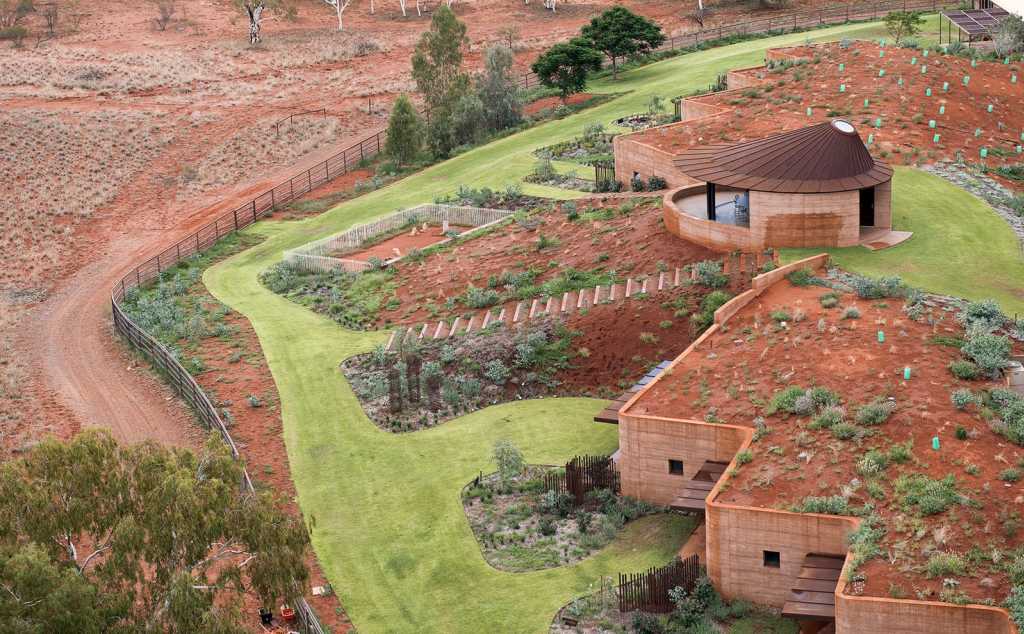
夯土墙(建筑)由富含铁的砂质粘土、从邻近河流中获得的砾石以及当地钻孔(洞)中的水一起制成。该住宿的设计代表了一种新的处理方法,将偏远的西北澳大利亚建筑,从阳光烘烤的薄波纹金属住所转移到自然冷却的夯土建筑结构中。
The rammed earth wall (construction) is composed of the iron rich, sandy clay that is a dominant feature of the site, gravel obtained from the adjacent river and (bonded with) water from the local bore (hole). The design of the accommodation represents a new approach to remote North Western Australia architecture, moving away from the sun baked, thin corrugated metal shelters to naturally cooled architectural earth formations.
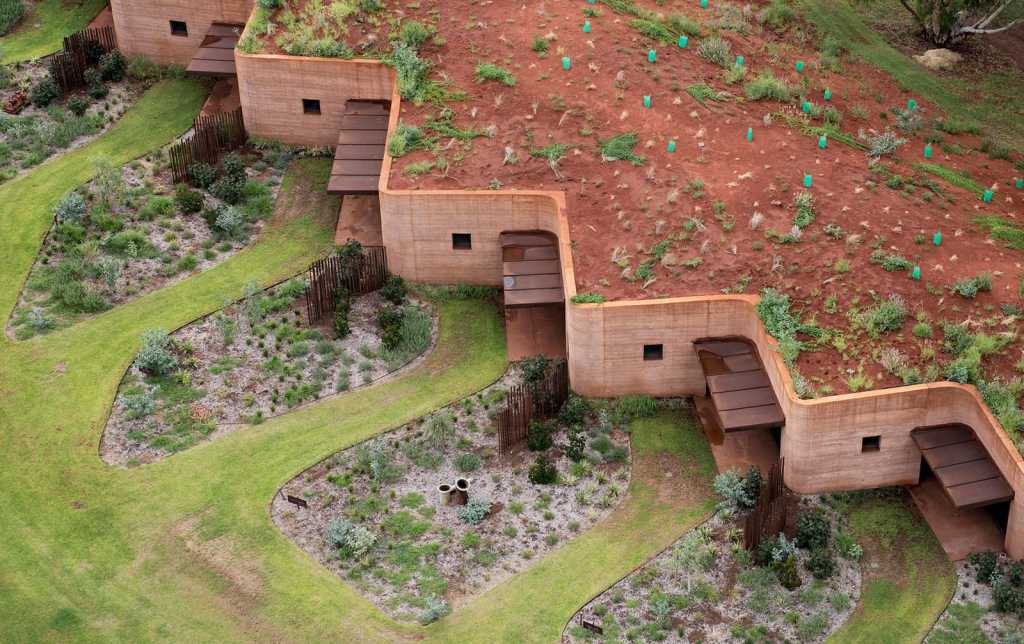
从当地粘土盘中提取的夯土、从河床中开采的鹅卵石和砾石都是融入景观的材料。顶部的亭子是多功能中心,会议室和小教堂。
Rammed earth extracted from the local clay pans, pebbles and gravel quarried from the river bed are the palette of materials that blend into the landscape. The pavilion at the top is the multi-functional hub, meeting room and chapel.
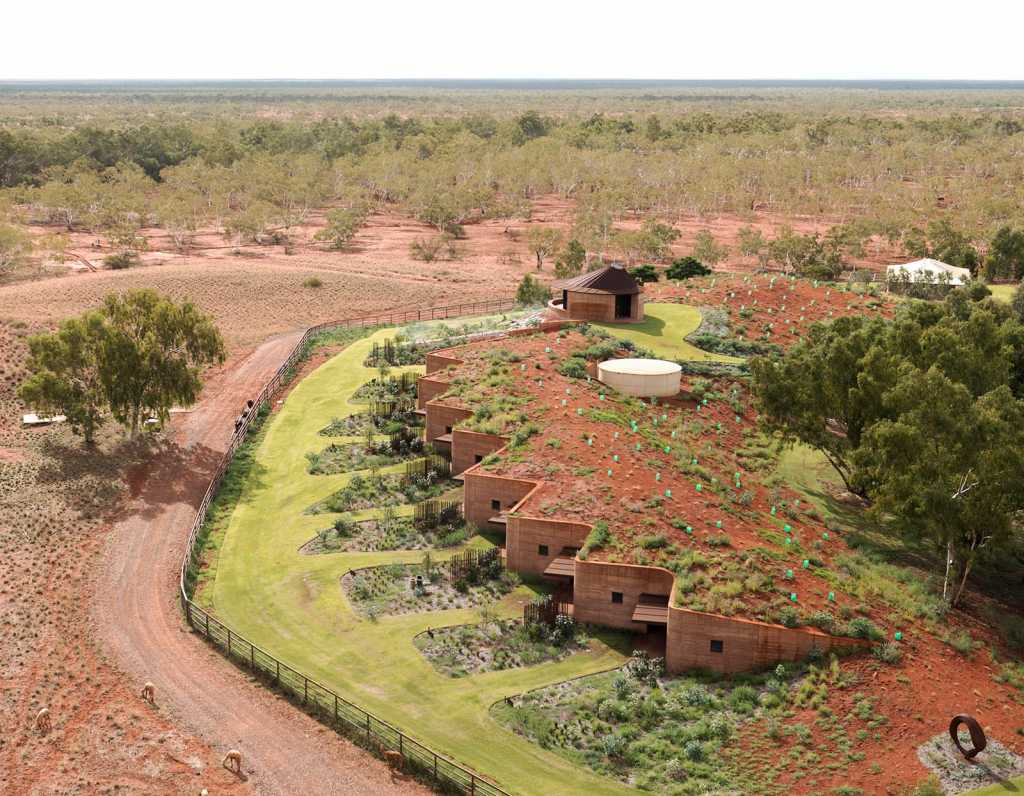
椭圆形的小教堂俯瞰着一个家庭墓地,河床和沿着河岸排列着的树木作为其背景。
The oval chapel overlooks a family cemetery and ghost and river gums that line the riverbank in the background.

住宅是阶梯式的,以保持每个阳台上有一定的隐私。有连续性,但内部没有连接起来。住宅的后墙被埋在沙丘之下。
The residences are stepped to maintain a level of privacy on each covered veranda. There are contiguous but are not internally linked. The rear walls of the residences are buried under the sand dune.
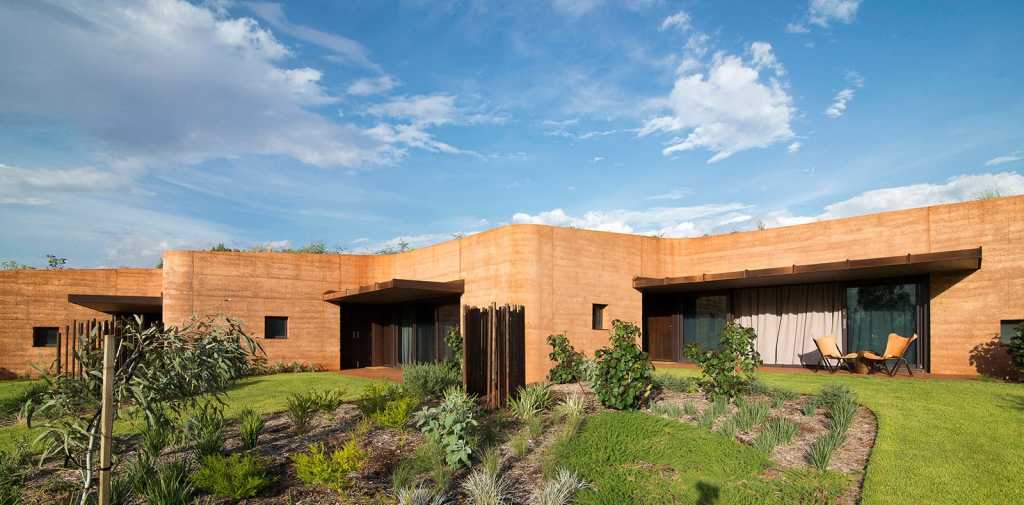
深雨篷屋顶的设计是为了遮挡最热时候一整天的阳光,并让居民能够享受到户外凉爽的晚风。。
The deep awning roof is designed to keep the sun out during the hottest part of the day and invite the inhabitant to outside and enjoy the cool evening breeze.
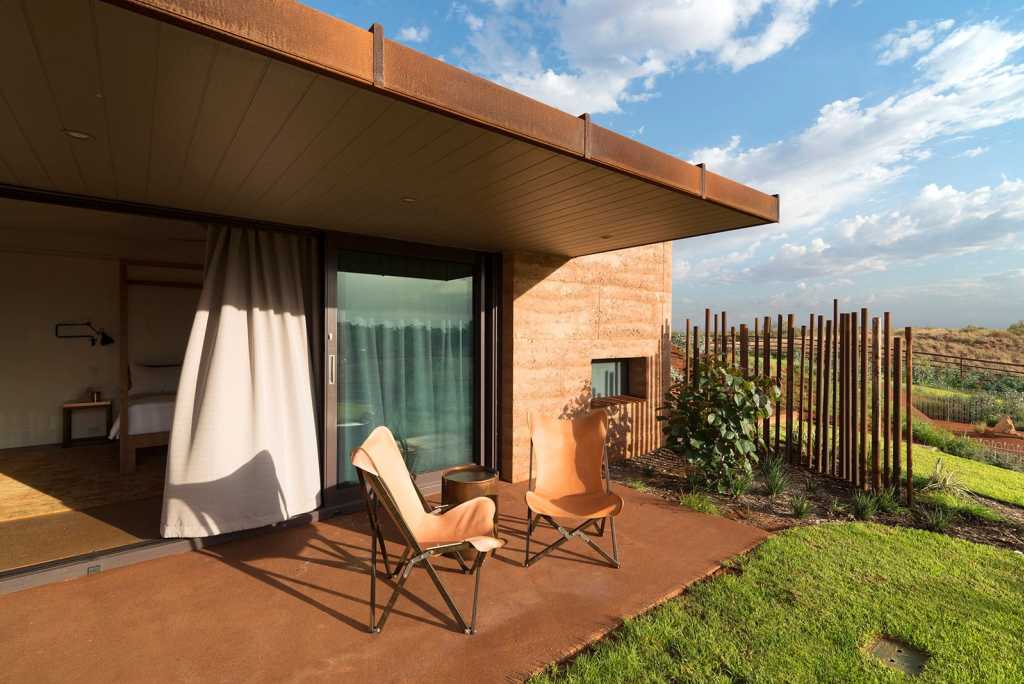
遮阳篷顶是一个Cor-Ten钢制的旋式遮阳框架,反射着地面上的混凝土板。混凝土板含有来自当地河流的砾石和骨料,这使得其抛光表面呈现出红色。
The awning roof is a Cor-Ten steel cyclonic shade frame, mirrored by a concrete slab on (the) ground. The concrete slab contains gravel and aggregates from the local river, which lend a reddish colour to its polished surface.
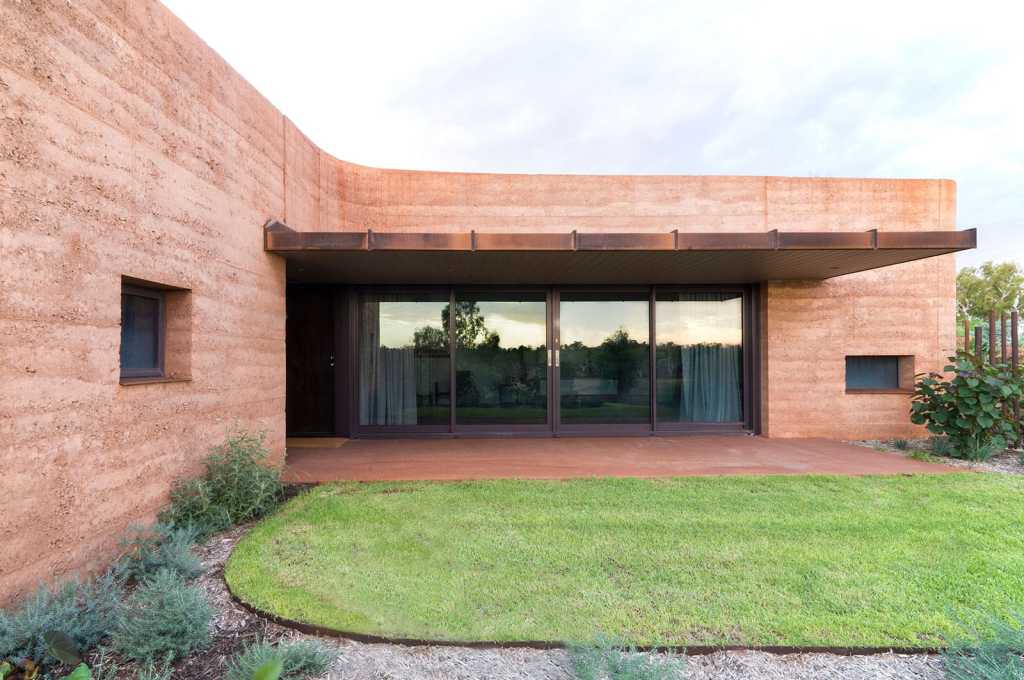
夯土墙的北端逐渐变小,直到旧建筑用作公共集会和休息区的地方。用旧钻杆建造的棚架提供了斑驳的光影。
The northern end of the rammed earth wall tapers down to where an older building is used as a communal meeting and sitting area. A pergola constructed of old drilling pipes provides a chequerboard of dappled light.

位于中心的教堂也形成了沙丘的顶点。最初的设想是作为一个开放的结构,后来增加了滑动的弧形玻璃窗,防止沙尘暴的侵袭。
The centrally located chapel also forms the apex of the sand hill. Originally conceived as an open structure, sliding curved glass windows were later added to provide protection from dust storms.

教堂下面是一个有着百年历史的墓地,周围有一道简单的栅栏,用来隔离当地的动物。
Below the chapel lies a hundred year old cemetery, enclosed by a simple fence to keep the local fauna out.
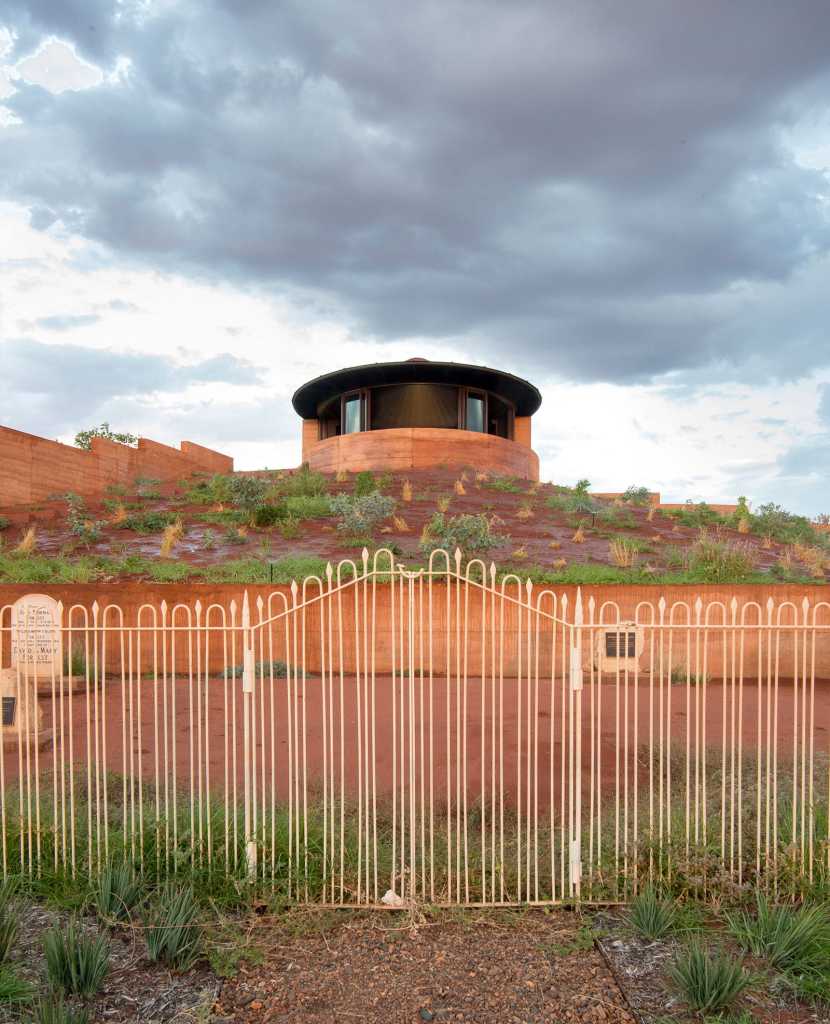
“小教堂”天花板上镶着金色的铝片,这种气旋等级的弧形推拉窗可以关闭展馆,以保护其内部免受沙尘暴的侵袭。
Gold annodised aluminium sheets line the ceiling of the ‘chapel’, cyclonic rated, curved sliding windows can close the pavilion to protect its interior from dust storms.

屋顶由Cor – Ten钢板制成,形成一个倾斜的圆锥体,顶端有一个天窗。屋顶是在工地外制造的,分成两半运输过来。
The roof is made from Cor-Ten steel sheets, forming an oblique cone and culminating with a skylight in the apex. The roof was fabricated off site and transported in two halves.

一个被玻璃覆盖的oculus,面向东方,这个保持着与天界的联系设计是受到罗马万神殿的启发,
A glass covered oculus, oriented east and inspired by the Pantheon of Rome, maintains a celestial connection
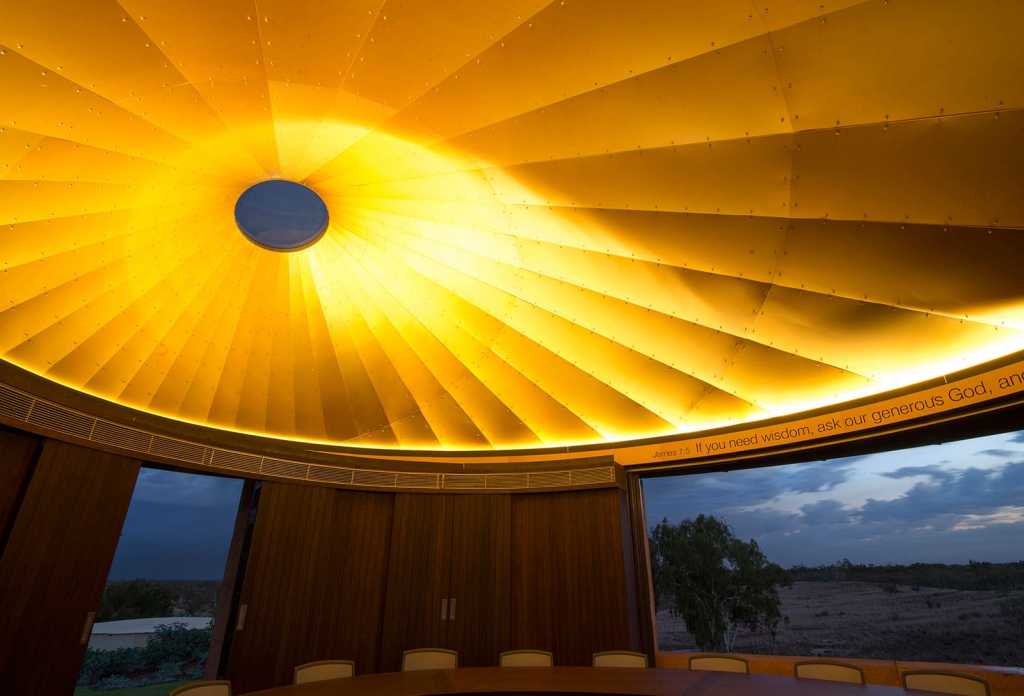
在内部,人们可以找到一个被夯土墙和一米深的沙丘所冷却的舒适环境。Sarah Foletta的室内设计是对材料和家具的一种克制、自然和稳健的选择。
Internally, one finds a comfortable environment, cooled by the rammed earth walls and the metre deep sand hill. The interior design by Sarah Foletta is a restrained, natural and robust selection of materials and furniture.
© Edward Birch
▼效果图 Perspective


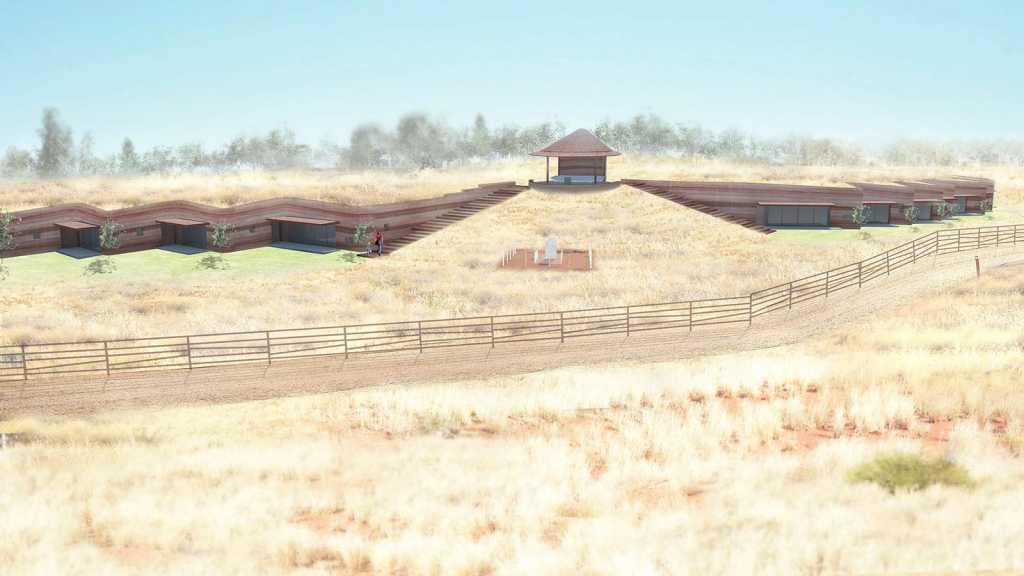
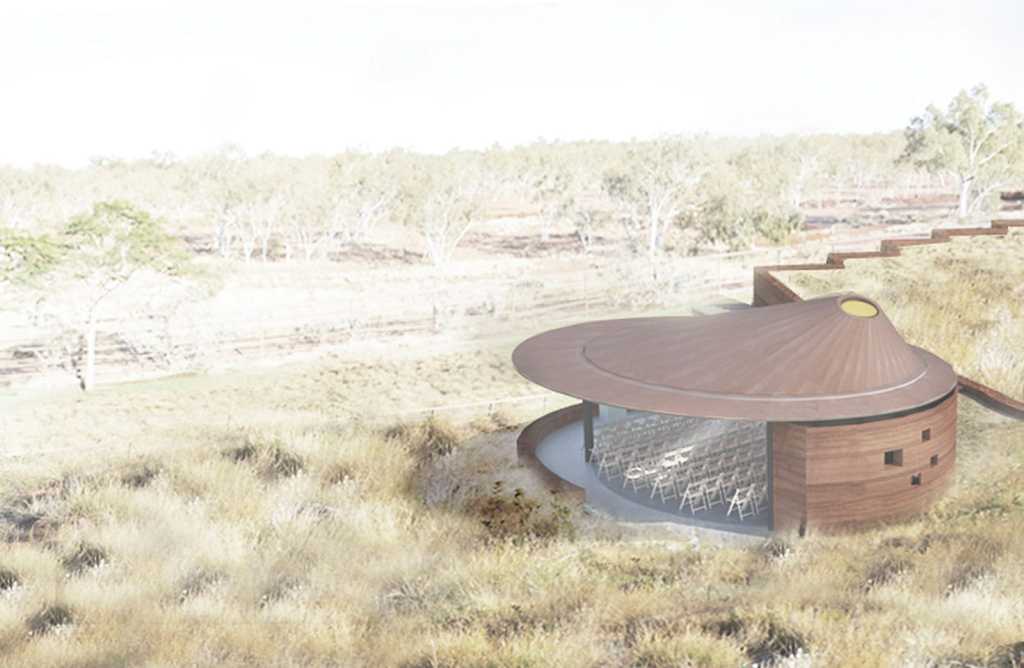
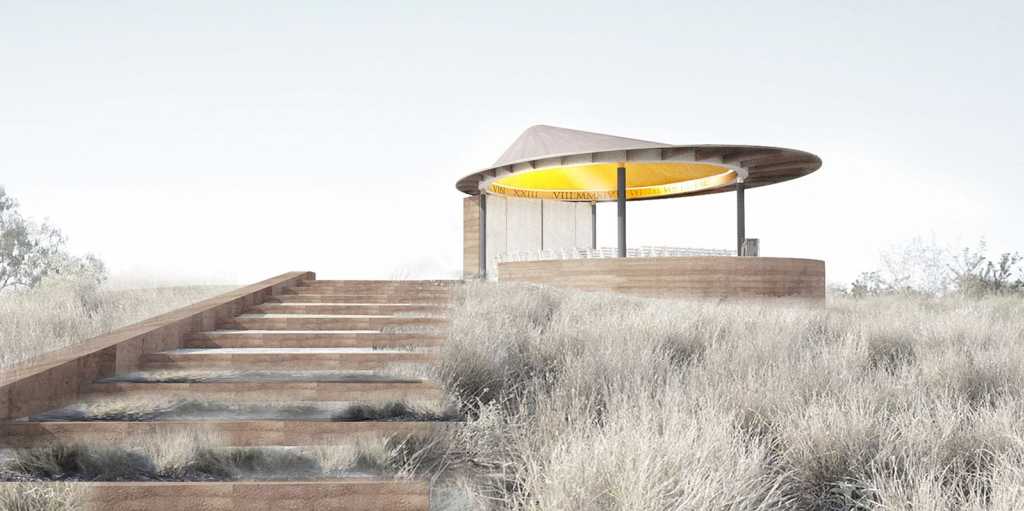
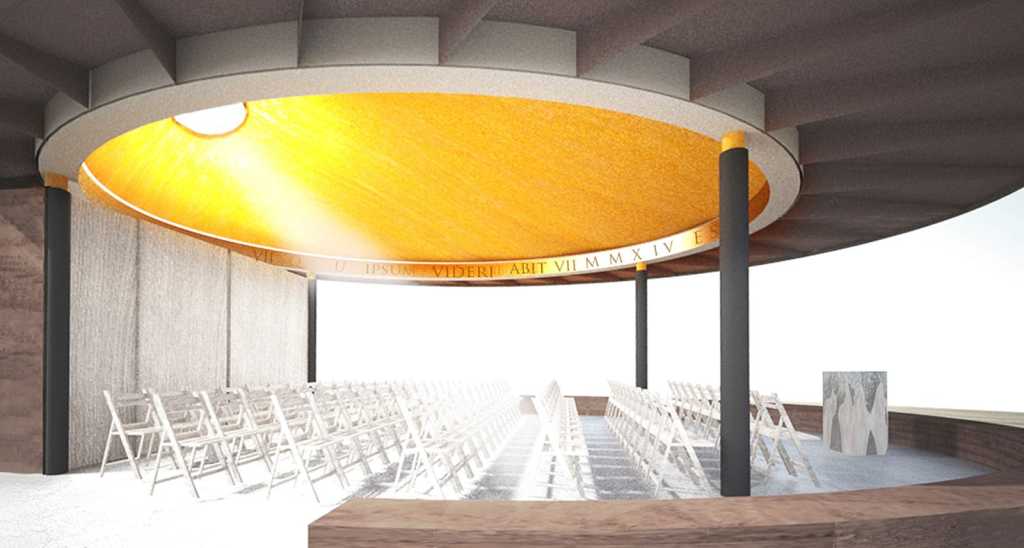
▼设计草图 Sketch
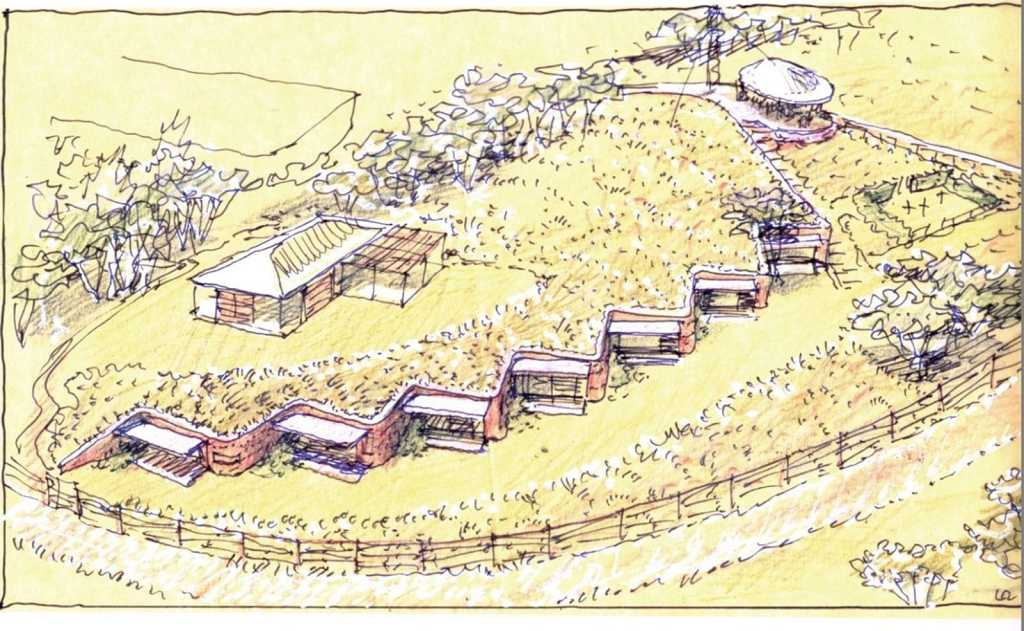
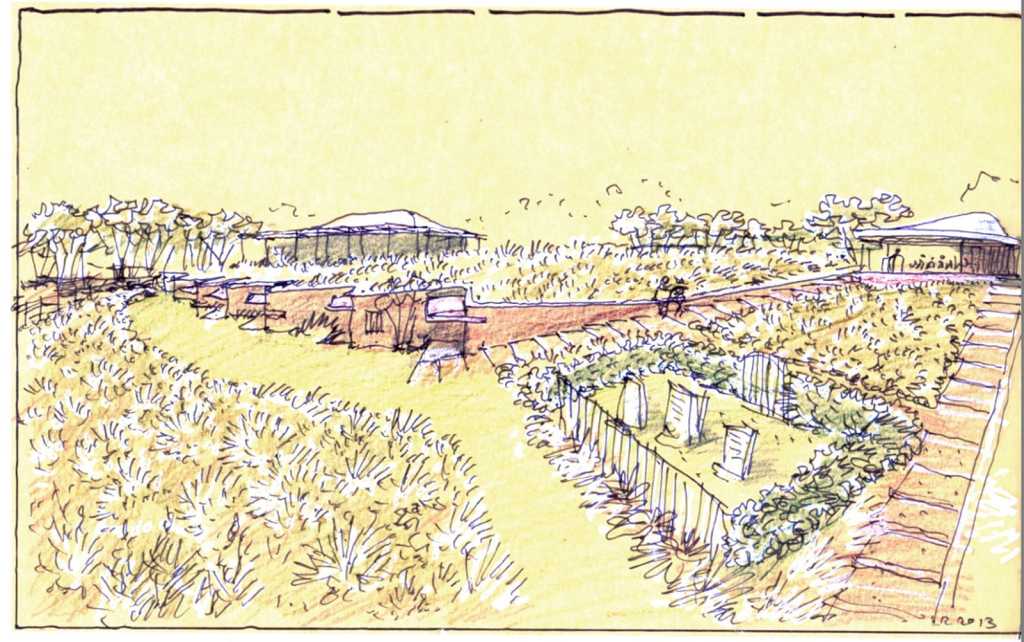
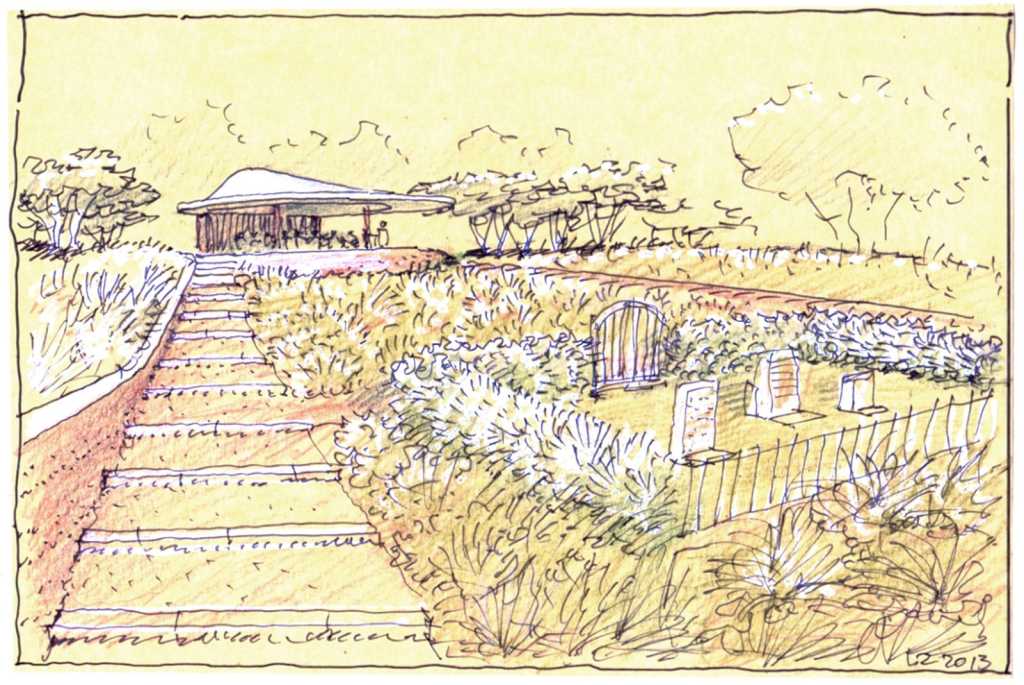
▼场地平面图 Site Plan
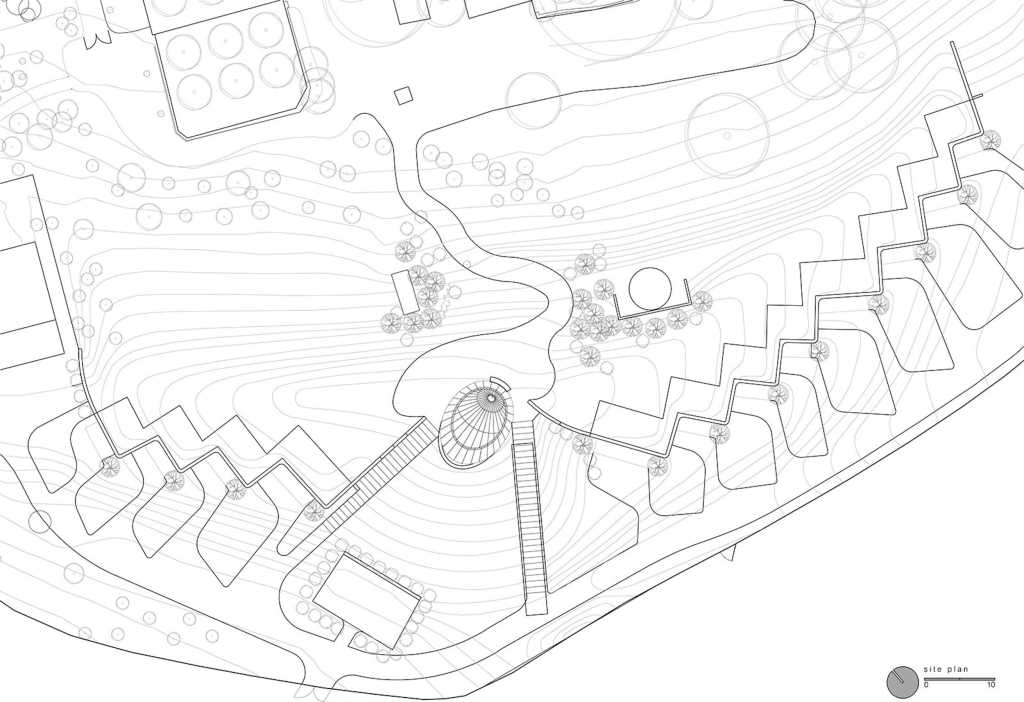
▼首层平面图 Ground Floor Plan

▼剖面图 Cross Sections
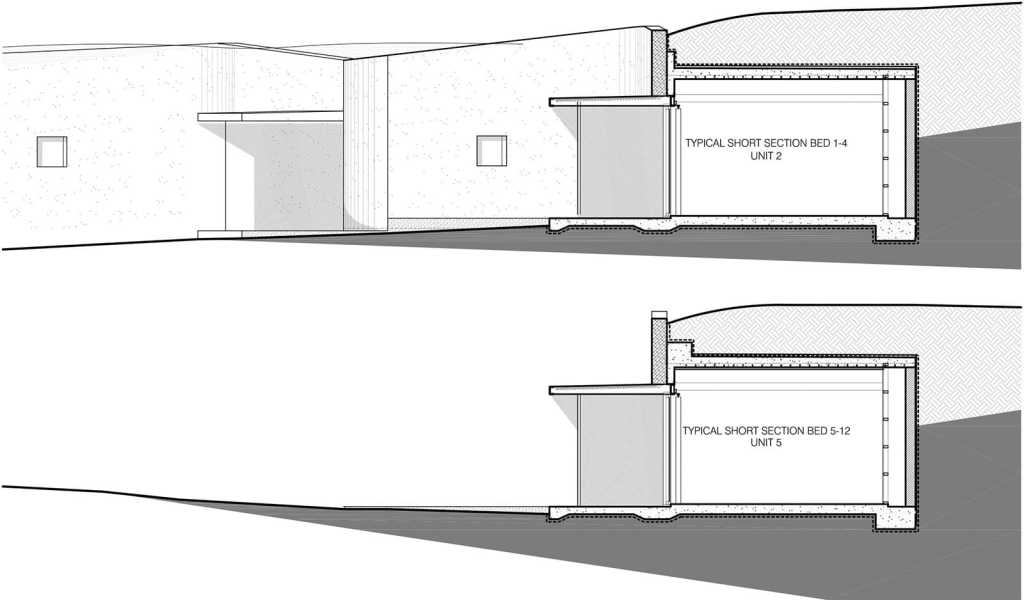
▼南立面图 East Elevation

▼施工照片 Construction
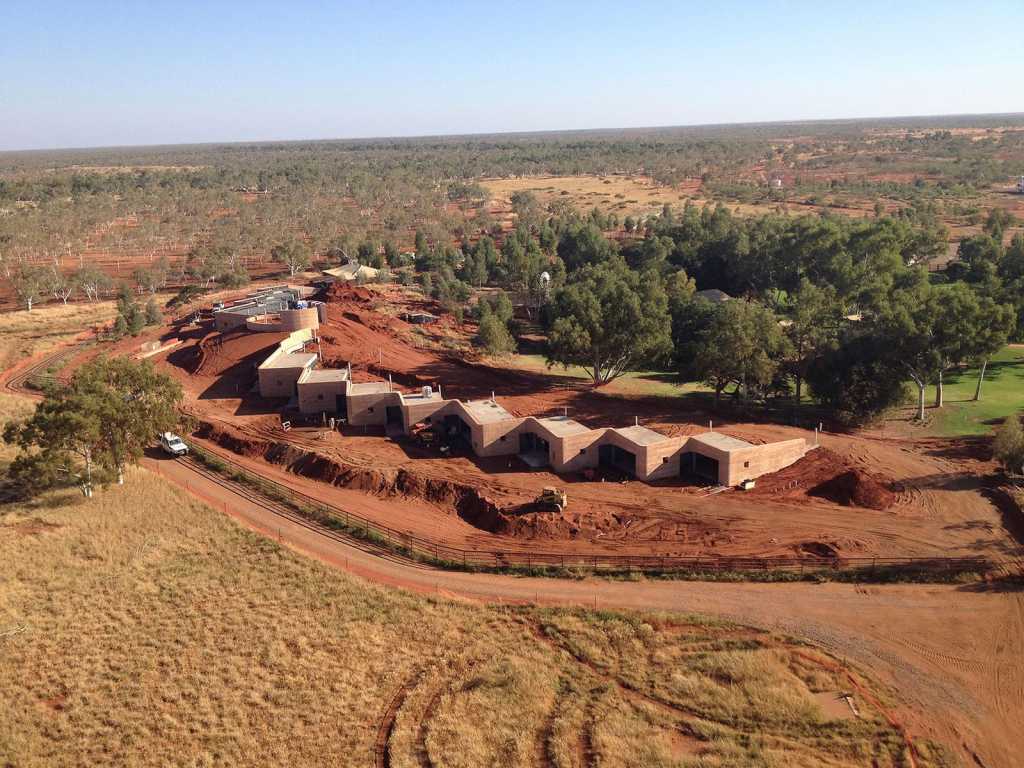






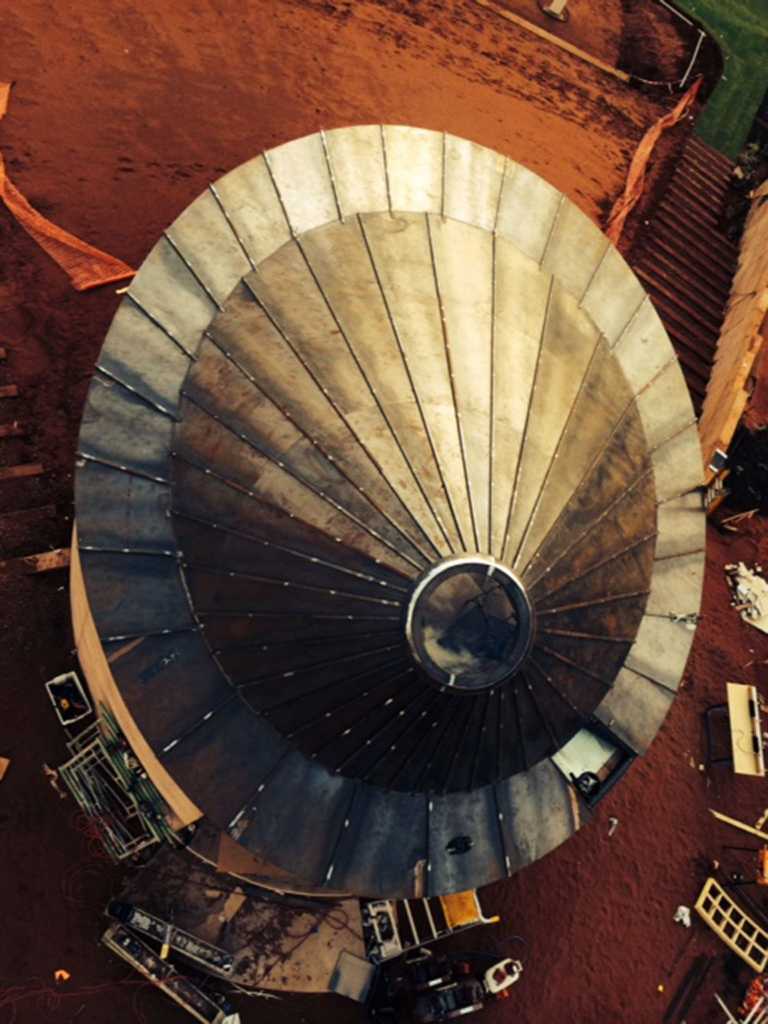
地点: 澳大利亚西北部
建筑设计: Luigi Rosselli
项目建筑师: Kristina Sahlestrom, Edward Birch, David Mitchell
室内设计师: Sarah Foletta
建筑商: Jaxon Construction
夯土承包商: Murchison Stabilised Earth Pty Ltd
结构顾问: Pritchard Francis
环境顾问: Floyd Energy
景观: Tim Davies Landscaping
摄影: Edward Birch
Location: North Western Australia
Design Architect: Luigi Rosselli
Project Architects: Kristina Sahlestrom, Edward Birch, David Mitchell
Interior Designer: Sarah Foletta
Builder: Jaxon Construction
Rammed Earth Contractor: Murchison Stabilised Earth Pty Ltd
Structural Consultant: Pritchard Francis
Environmental Consultant: Floyd Energy
Landscaping: Tim Davies Landscaping
Photography: Edward Birch
更多 Read more about:Luigi Rosselli Architects


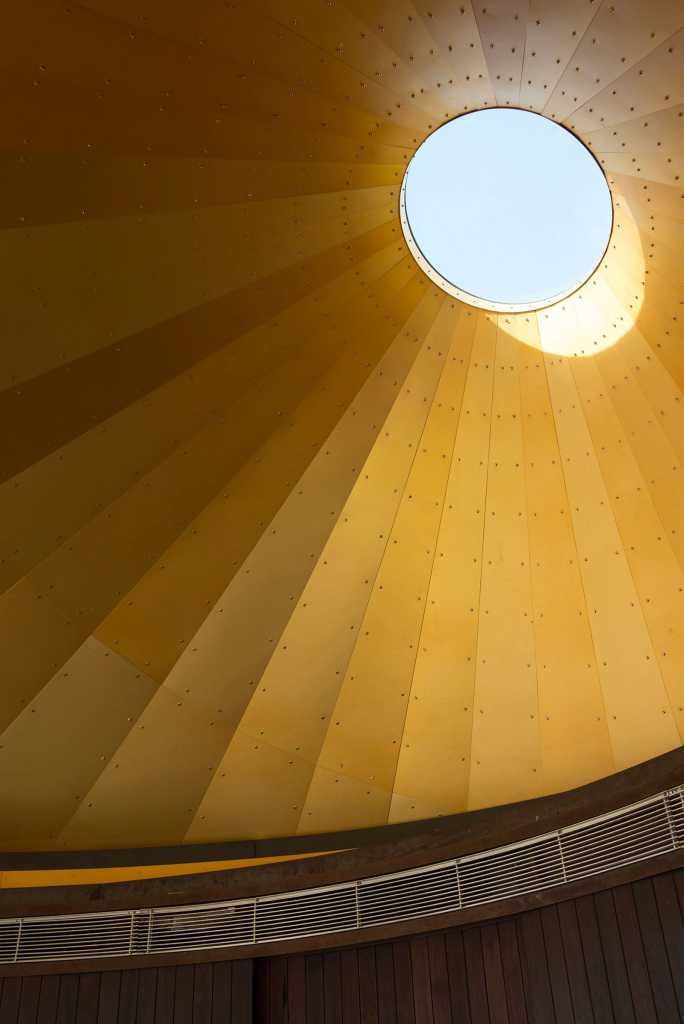
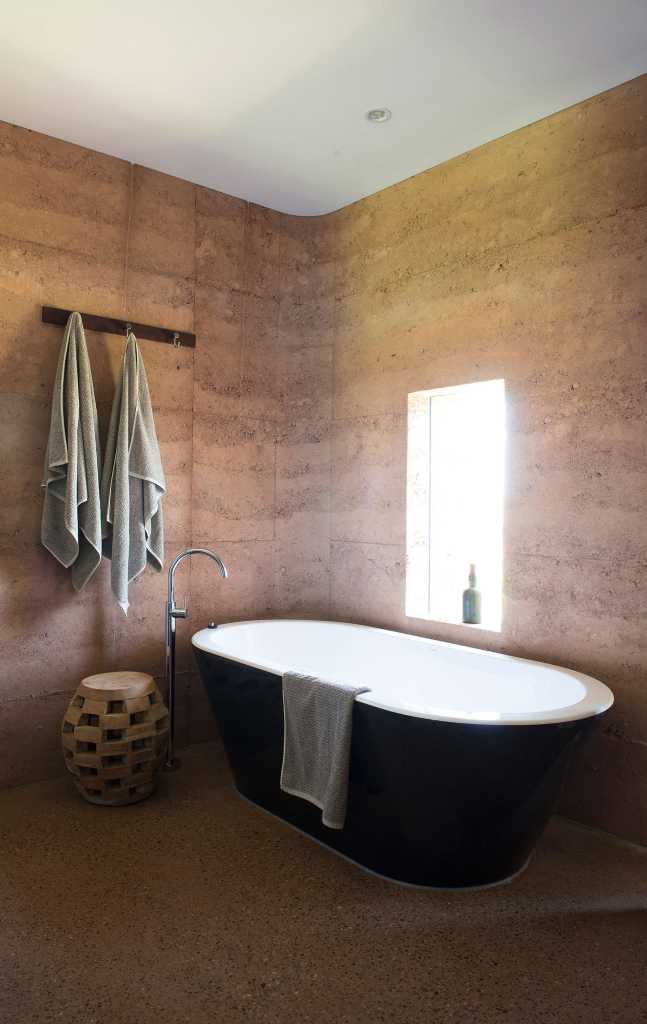


夯土(生土)建筑,冬暖夏凉~~国内研究比较深入的是北京建大的穆钧教授~~原来他在西安建科~~
延伸阅读:https://mp.weixin.qq.com/s/UI-NPgW0V3BluiOiRGYsow